Springtime and the color green go hand in hand. Fresh, vibrant, energetic hues of green are everywhere—from the delicate, mere hint of green on a clematis flower bud…
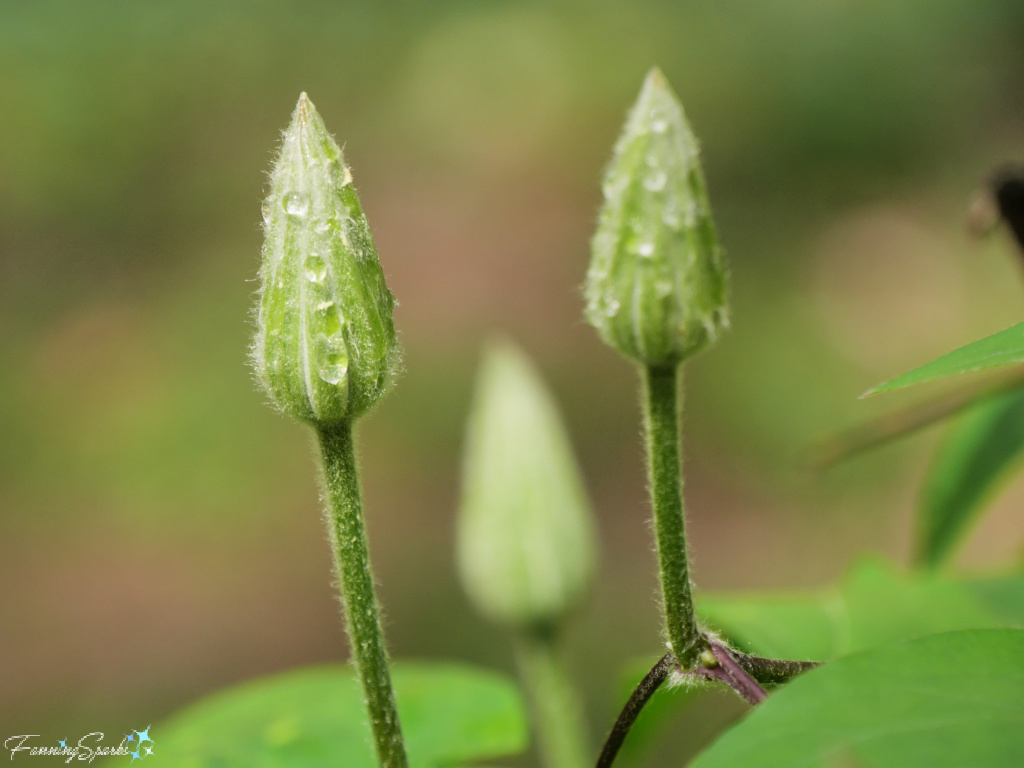
… to the vibrant, lush green of a patch of clover…
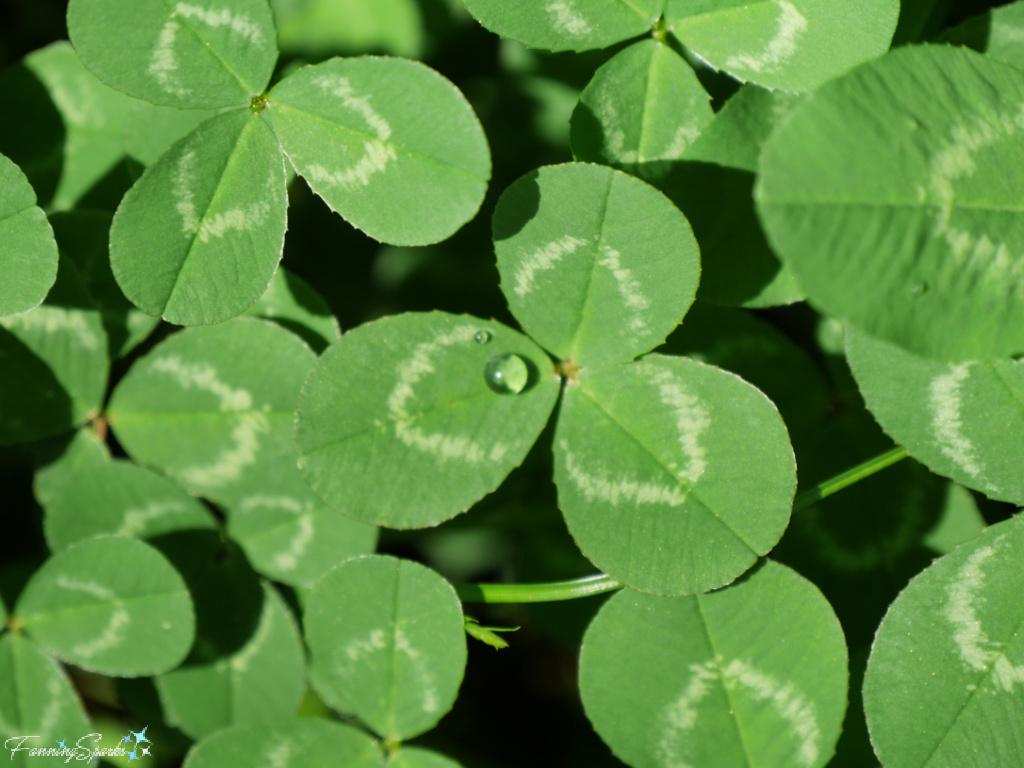 … to the magic of fresh, variegated hosta foliage.
… to the magic of fresh, variegated hosta foliage.
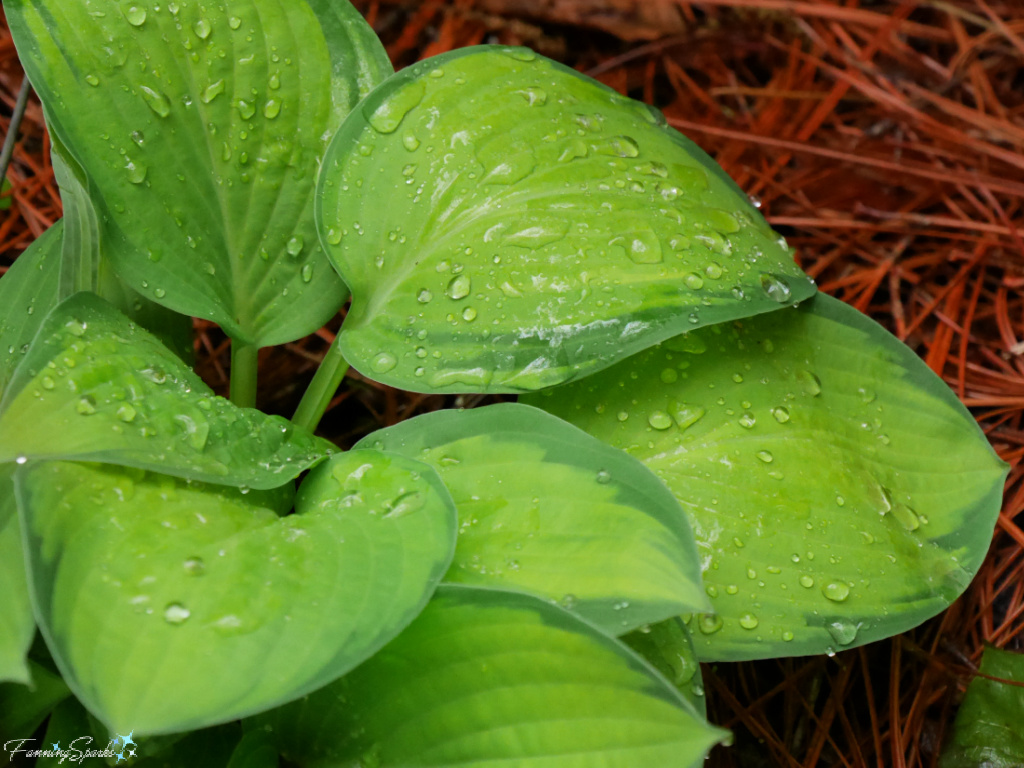 Spring may be the “green season” but the color green appears year-round. “With a multitude of greens so plentiful in the surrounding world, the human eye literally sees more green than any other color” writes Leatrice Eiseman in her book Color: Messages and Meanings.
Spring may be the “green season” but the color green appears year-round. “With a multitude of greens so plentiful in the surrounding world, the human eye literally sees more green than any other color” writes Leatrice Eiseman in her book Color: Messages and Meanings.
Hmmm, we see more green than any other color? I’d never thought of it that way…although, it’s obviously true if you put yourself in the right place at the right time. For instance, hiking along a forest path in New York state in early summer…
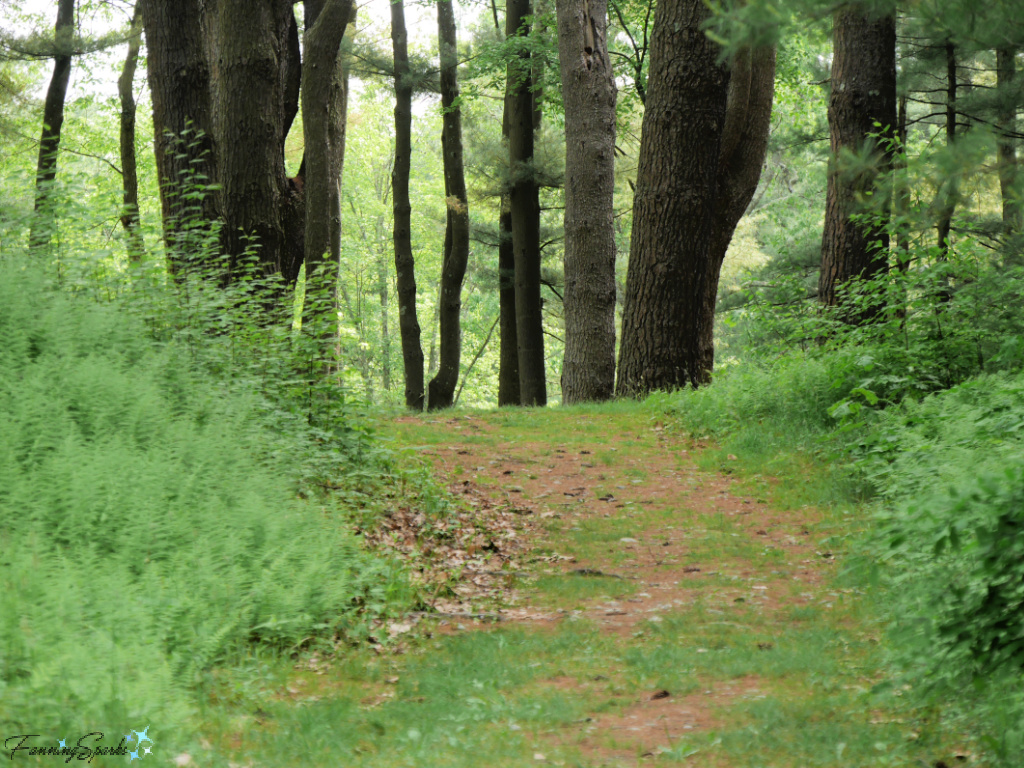

…or strolling through a Japanese moss garden in spring …
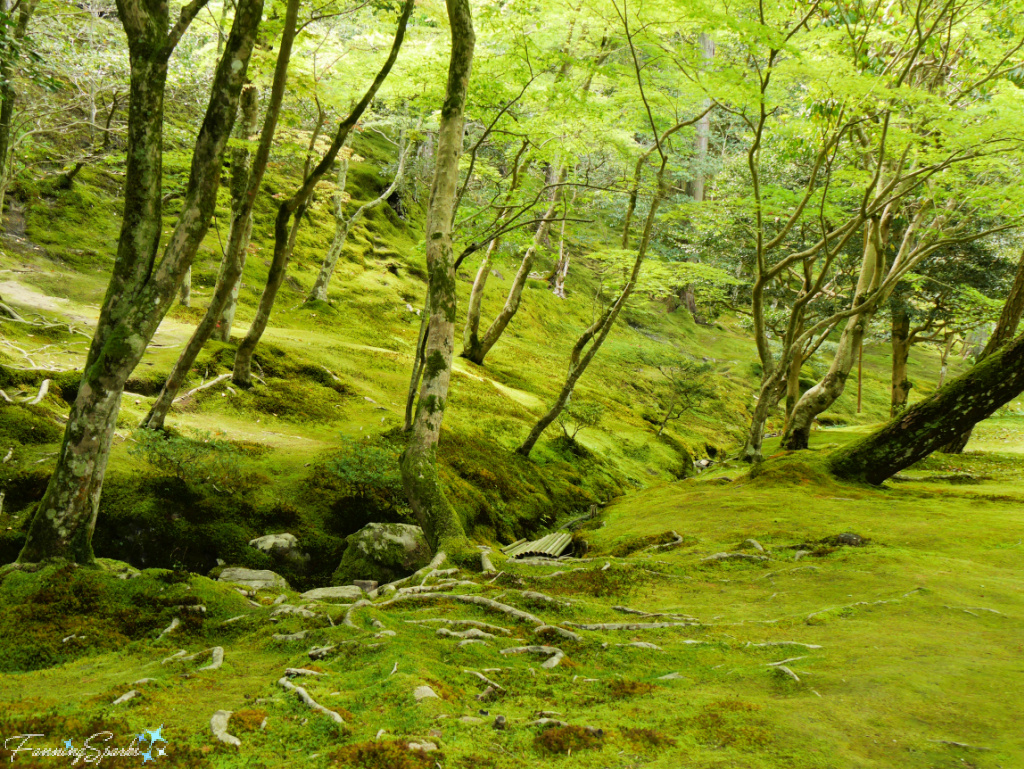
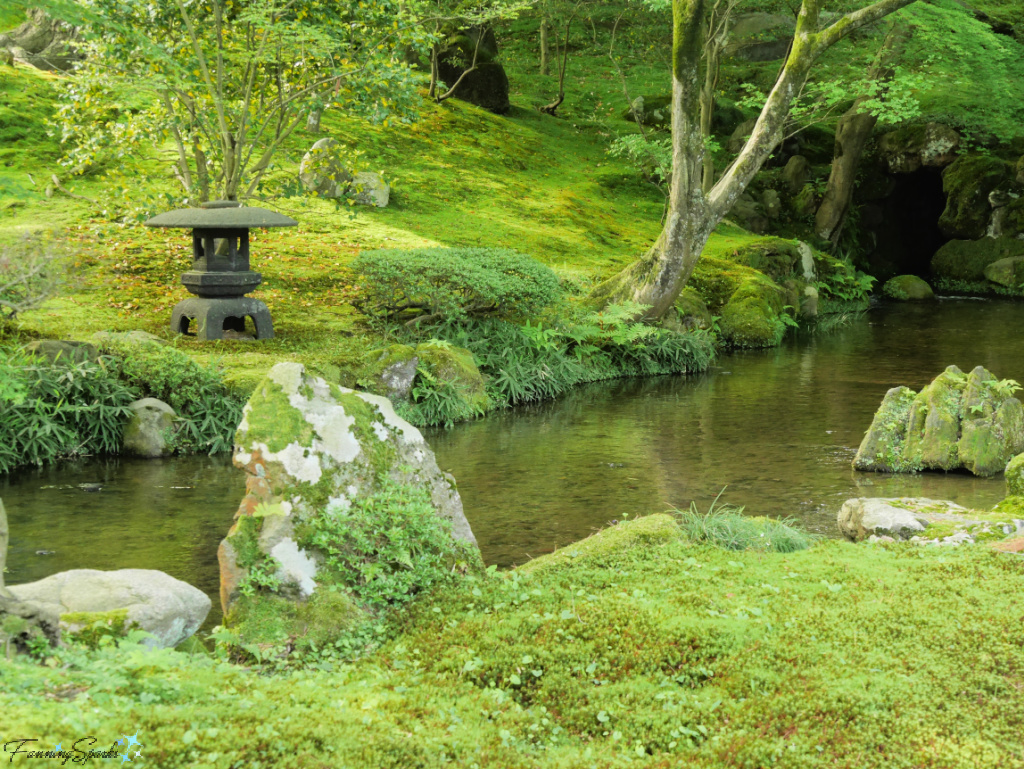 … or kayaking over the gentle waters of a small lake in Georgia.
… or kayaking over the gentle waters of a small lake in Georgia.
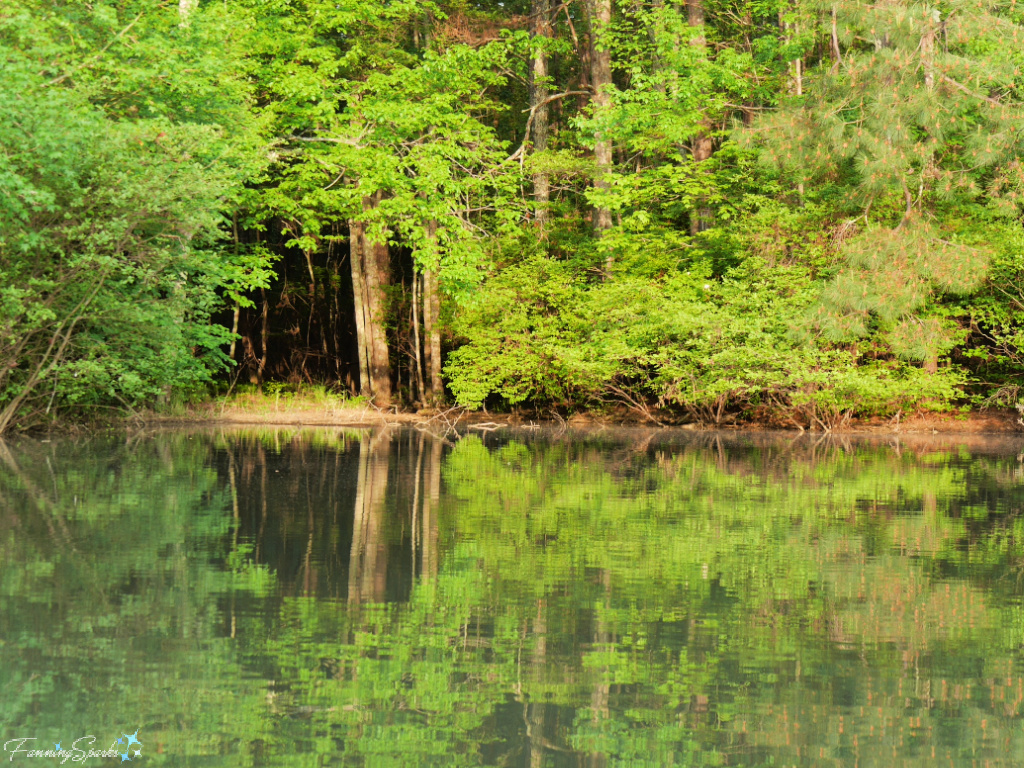
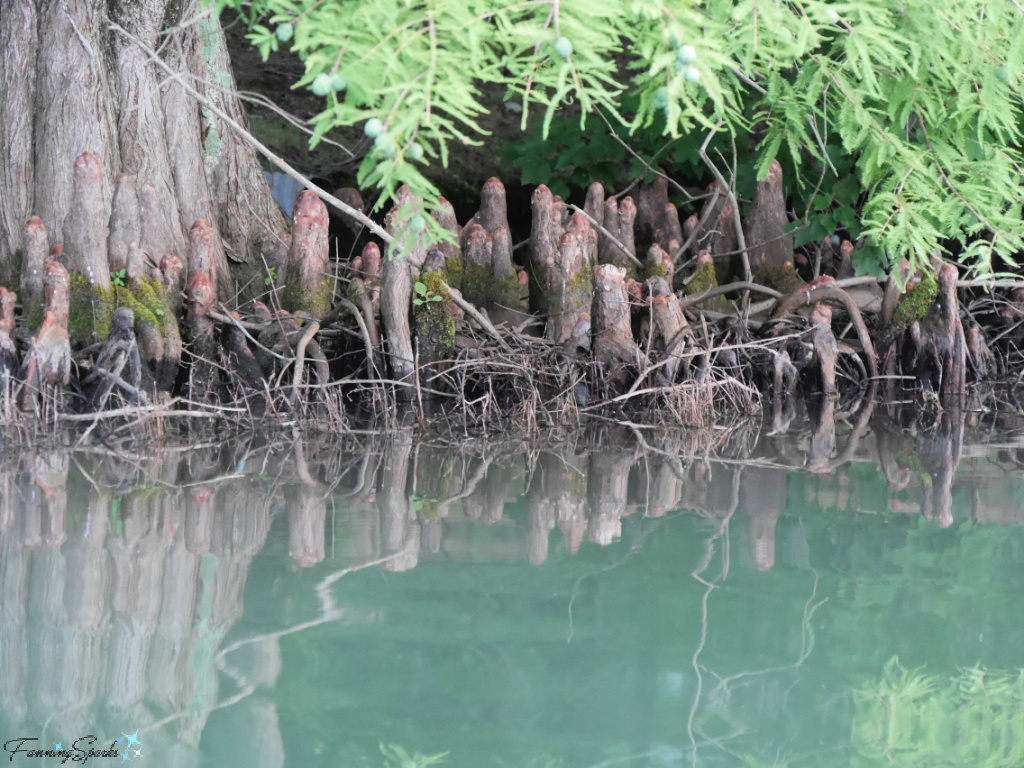
“A majority of people see green as symbolic of nature and “new beginnings” as green refreshes, restores and reaffirms that the seasons repeat in exactly the same sequence every year, always heralded by the emergence of the tender young green shoots in spring.” writes Eiseman.
The color green is near and dear to those tending the earth and raising crops. From the minute seeds are sown in the freshly-prepared soil, farmers anxiously await green sprouts. Shown here are young cotton plants in a Georgia farm field in early spring.
 Throughout the growing season, farmers hope for the right mix of sun and rain to make the plants thrive. These potato plants, spotted in a field on Prince Edward Island at the end of the summer, appear strong and healthy.
Throughout the growing season, farmers hope for the right mix of sun and rain to make the plants thrive. These potato plants, spotted in a field on Prince Edward Island at the end of the summer, appear strong and healthy.
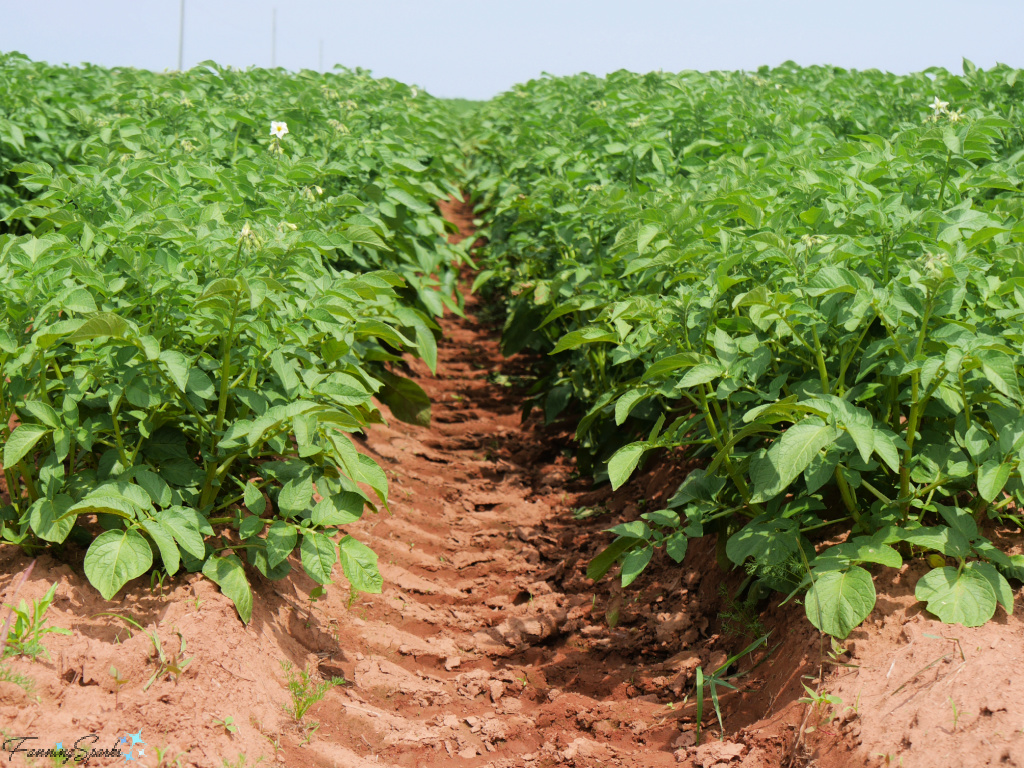 A nearby field of grain also promises a bountiful crop.
A nearby field of grain also promises a bountiful crop.
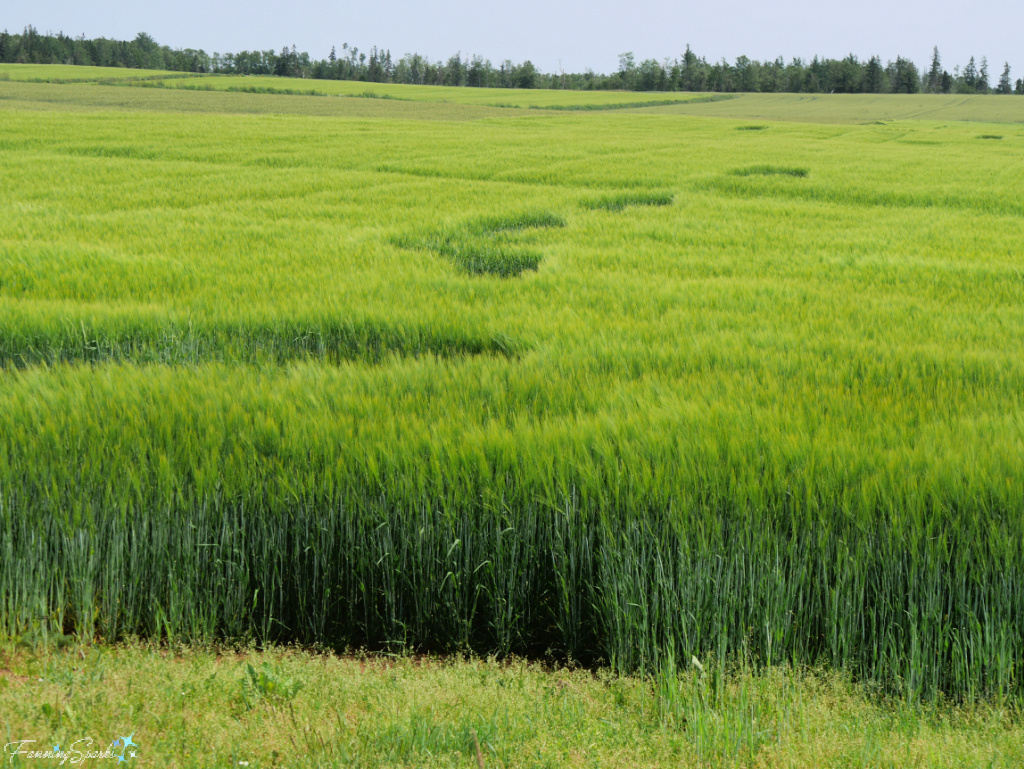 Depending on the type of crop and the growing season, new growth may appear shortly after the harvest. You can see green grass around the hay bales on this Prince Edward Island field.
Depending on the type of crop and the growing season, new growth may appear shortly after the harvest. You can see green grass around the hay bales on this Prince Edward Island field.
 You don’t have to plant an entire field to experience the wonder of tiny green seedlings…
You don’t have to plant an entire field to experience the wonder of tiny green seedlings…

… or newly formed green fruit and berries…
 … or fully grown vegetables ready to harvest.
… or fully grown vegetables ready to harvest.
 You’ll notice the color green dominates the photos in this blog post. But green isn’t just one hue. There are many variations of green—some lean towards yellow while others lean towards blue, there are dark shades and light tints, and most often there’s a blend of various colors of green.
You’ll notice the color green dominates the photos in this blog post. But green isn’t just one hue. There are many variations of green—some lean towards yellow while others lean towards blue, there are dark shades and light tints, and most often there’s a blend of various colors of green.
Let’s examine the green section of the Martian Colour Wheel as a point of reference. Regular readers may recognize Warren Mars’ version of the color wheel from my previous blog post The Color Yellow. One of the features I like about the Martian Colour Wheel is how every color is named with, as Mars puts it, “a simple, recognisable, real world example!”. Predictably, the majority of green colors are named after plants—there are Zucchini, Oak Leaf, Sage, Spinach and Granny Smith, to name a few.
 Interestingly, while there are an endless number of trees, shrubs, grasses, vegetables and fruits modeling the color green, there are very few plants which actually have green flowers. Here are two exceptions for which I have photos—Jack-in-the-Pulpit (Arisaema yamatense ) and Tulip Tree (Liriodendron).
Interestingly, while there are an endless number of trees, shrubs, grasses, vegetables and fruits modeling the color green, there are very few plants which actually have green flowers. Here are two exceptions for which I have photos—Jack-in-the-Pulpit (Arisaema yamatense ) and Tulip Tree (Liriodendron).
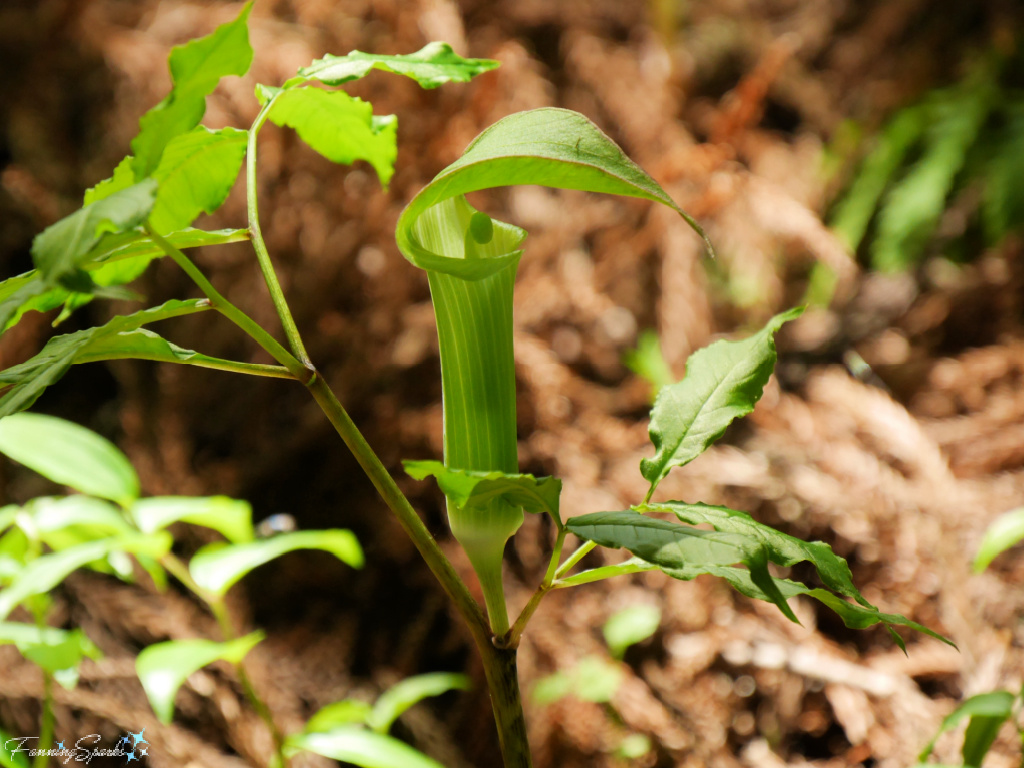
 Green flowers may be rare but most ornamental and flower gardens are dominated by the color green. I like the way designer/ author Terence Conran describes green’s role “as a visual anchor in nature” in his book, Conran on Color. Other authors make similar observations—calling green a peacekeeper, a harmonizer and a backdrop. It’s also why green symbolizes environmental causes and has come to represent the mission to save our planet.
Green flowers may be rare but most ornamental and flower gardens are dominated by the color green. I like the way designer/ author Terence Conran describes green’s role “as a visual anchor in nature” in his book, Conran on Color. Other authors make similar observations—calling green a peacekeeper, a harmonizer and a backdrop. It’s also why green symbolizes environmental causes and has come to represent the mission to save our planet.
These thoughts are echoed in the meaning and symbolism often assigned to the color green. “Green: the color of harmony and health. Green is a generous, relaxing color that revitalizes our body and mind.” writes Jacob Olesen, a world-renowned color expert, on his Color Meanings website. “It balances our emotions and leaves us feeling safe and secure. It also gives us hope, with promises of growth and prosperity, and it provides a little bit of luck to help us along the way.”
Here’s a peek at green playing its role as a “visual anchor in nature” in our garden.
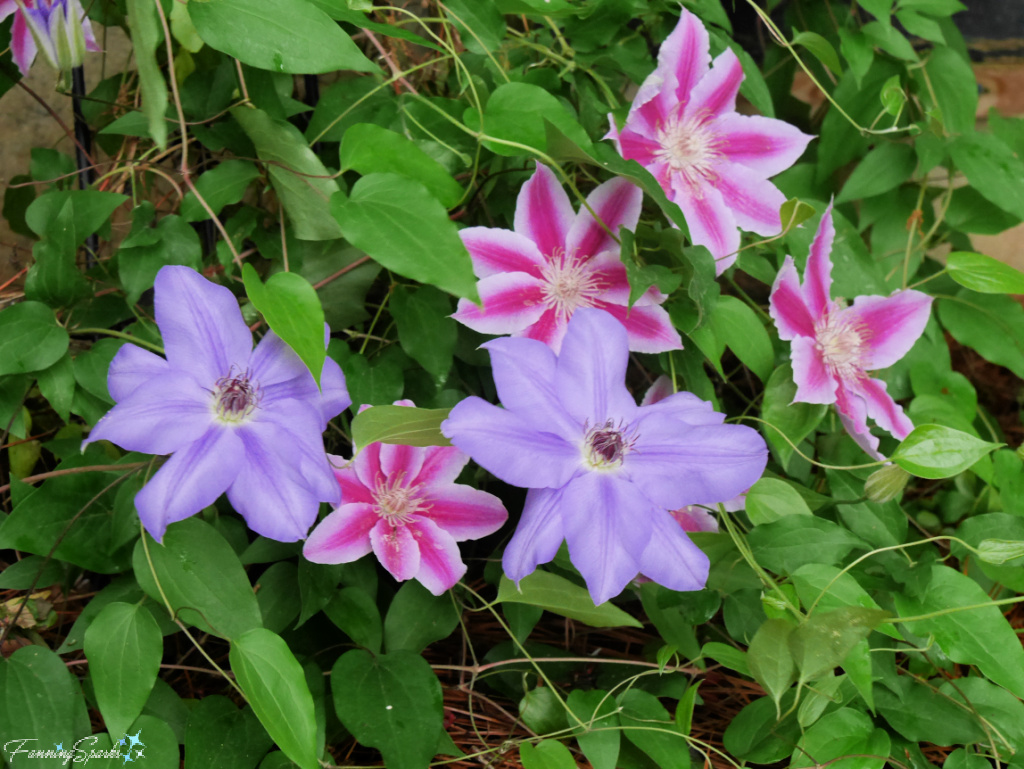 A green backdrop also provides the perfect hiding place for some of Mother Nature’s smallest creations. Notice the outstanding camouflage of the Praying Mantis, Luna Moth and Tomato Hornworm pictured below.
A green backdrop also provides the perfect hiding place for some of Mother Nature’s smallest creations. Notice the outstanding camouflage of the Praying Mantis, Luna Moth and Tomato Hornworm pictured below.
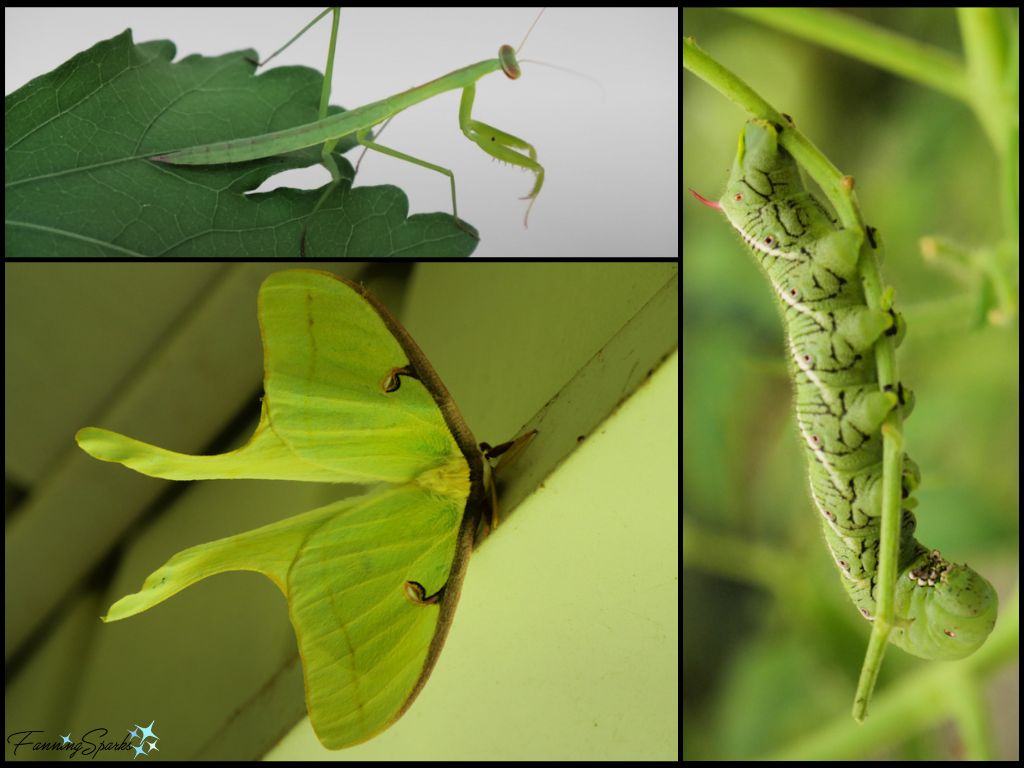 For the same reason, some birds have green plumage or green feather highlights. In this photo, you can see how the iridescent green of the Ruby-throated Hummingbird helps it blend into the surrounding foliage.
For the same reason, some birds have green plumage or green feather highlights. In this photo, you can see how the iridescent green of the Ruby-throated Hummingbird helps it blend into the surrounding foliage.
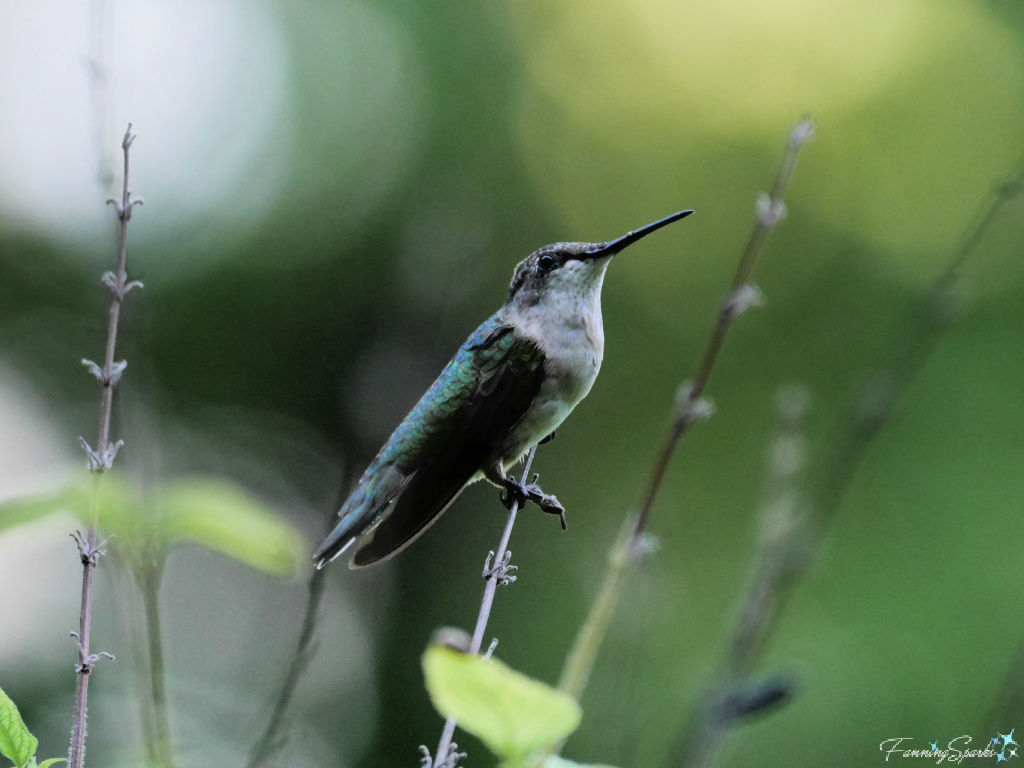 The exact opposite applies to the magnificent green of a peacock’s tail—this green is meant to attract attention not hide from it.
The exact opposite applies to the magnificent green of a peacock’s tail—this green is meant to attract attention not hide from it.
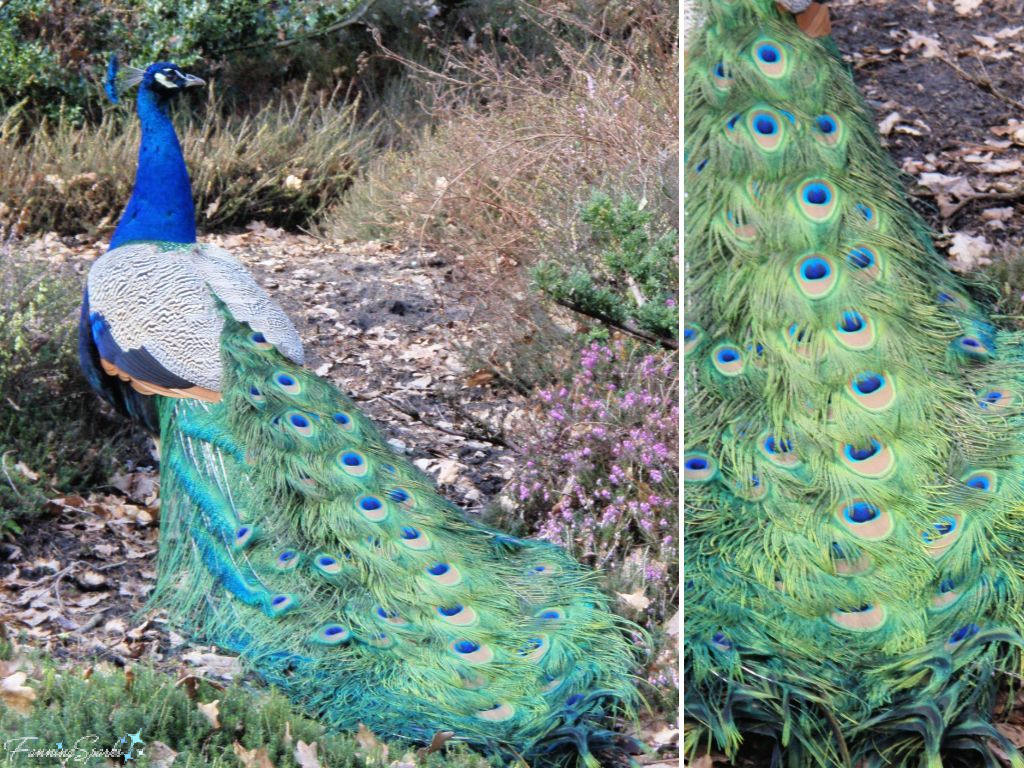 The common, male Mallard Duck also has a distinctive green feature—an iridescent green head.
The common, male Mallard Duck also has a distinctive green feature—an iridescent green head.
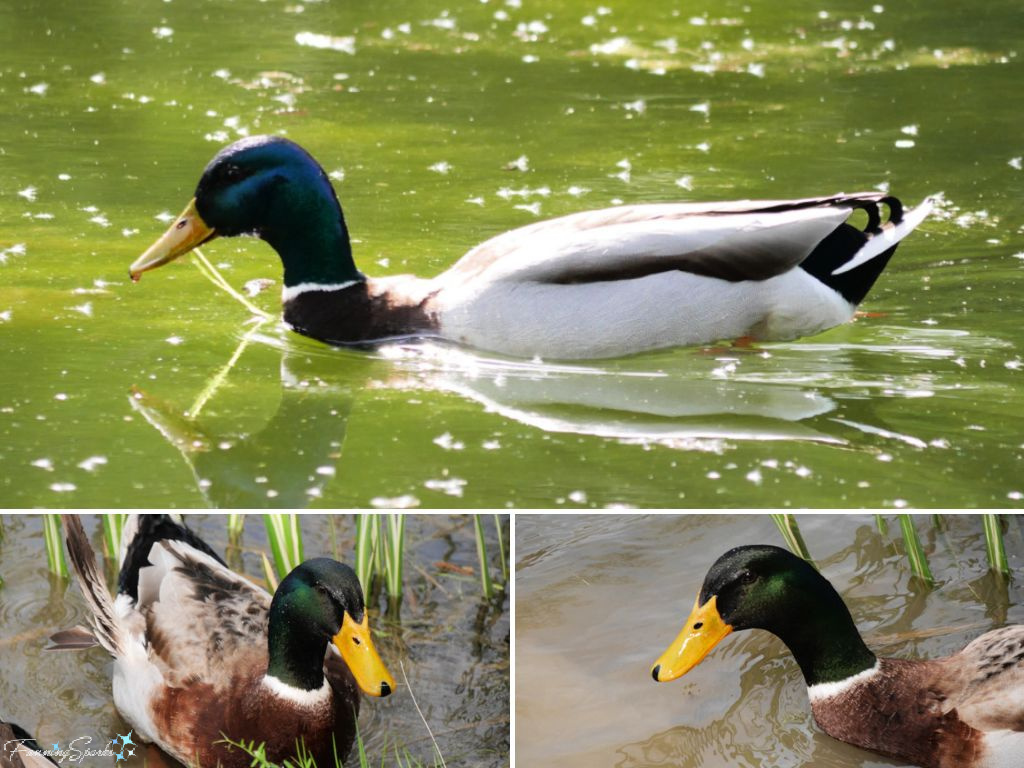 Reptiles and amphibians also use the color green to hide. One we see frequently here in Georgia is the charming little Green Anole gecko.
Reptiles and amphibians also use the color green to hide. One we see frequently here in Georgia is the charming little Green Anole gecko.
 And, having saved the best for last, here’s a perfectly-camouflaged American Bullfrog.
And, having saved the best for last, here’s a perfectly-camouflaged American Bullfrog.
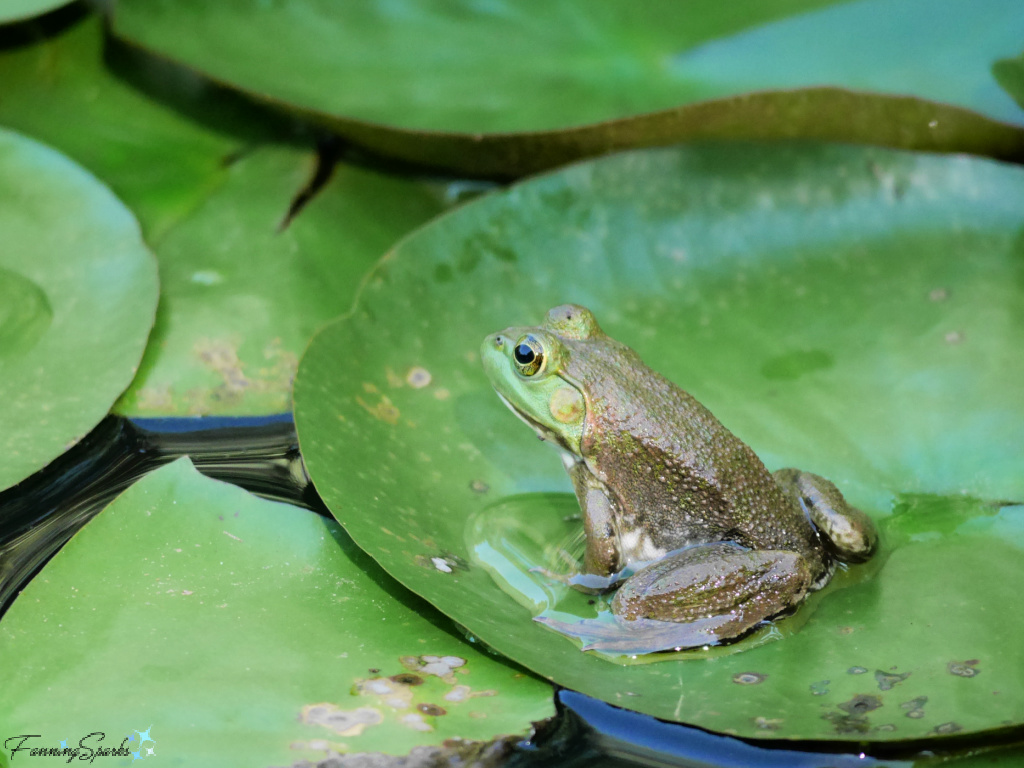 Of course, I can’t mention green frogs without commenting on Kermit the Frog’s famous lament “It’s not that easy bein’ green”. He started his segment on the March 10, 1970 episode of Sesame Street by saying “Greetings! Kermit the Frog here and today I’d like to tell you a little bit about the color green. Do you know what’s green? Well, I am for one thing. You see frogs are green, and I’m a frog, and that means I’m green. You see?”. Then he sang “Bein’ Green”. In the second verse, Kermit explains:
Of course, I can’t mention green frogs without commenting on Kermit the Frog’s famous lament “It’s not that easy bein’ green”. He started his segment on the March 10, 1970 episode of Sesame Street by saying “Greetings! Kermit the Frog here and today I’d like to tell you a little bit about the color green. Do you know what’s green? Well, I am for one thing. You see frogs are green, and I’m a frog, and that means I’m green. You see?”. Then he sang “Bein’ Green”. In the second verse, Kermit explains:
“It’s not that easy bein’ green
It seems you blend in
With so many other ordinary things
And people tend to pass you over
Cause you’re not standing out”.
But he finishes the song by concluding that:
“I’m green and it’ll do fine
It’s beautiful, and I think it’s what I want to be”.
More Info
Previous blog posts mentioned in today’s blog post include:
. The Color Yellow which celebrates all things yellow.
The following books and websites were consulted in the writing of this blog post:
. Color: Messages and Meanings book by Leatrice Eiseman which is available here on Internet Archives.
. Warren Mars website features the Martian Colour Wheel.
. Conran on Color book by Terence Conran which is available here on Internet Archives.
. Color Meanings website by Jacob Olesen provides insight into the power and symbolism of color.
Today’s Takeaways
1. “The human eye literally sees more green than any other color” Leatrice Eiseman
2. “Green’s role as a visual anchor in nature” Terence Conran
3. “Green is a generous, relaxing color that revitalizes our body and mind. It balances our emotions and leaves us feeling safe and secure. It also gives us hope, with promises of growth and prosperity.” Jacob Olesen


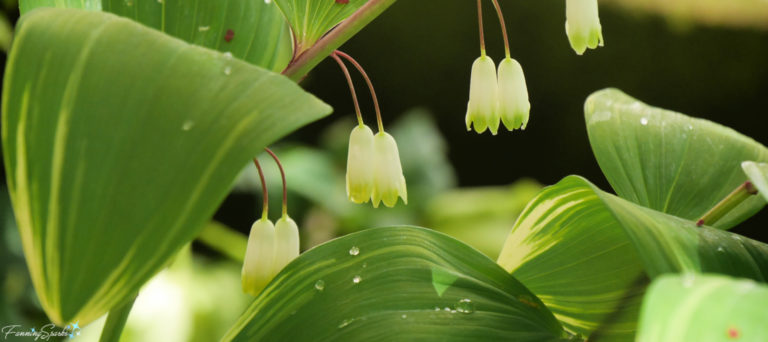


Comments are closed.